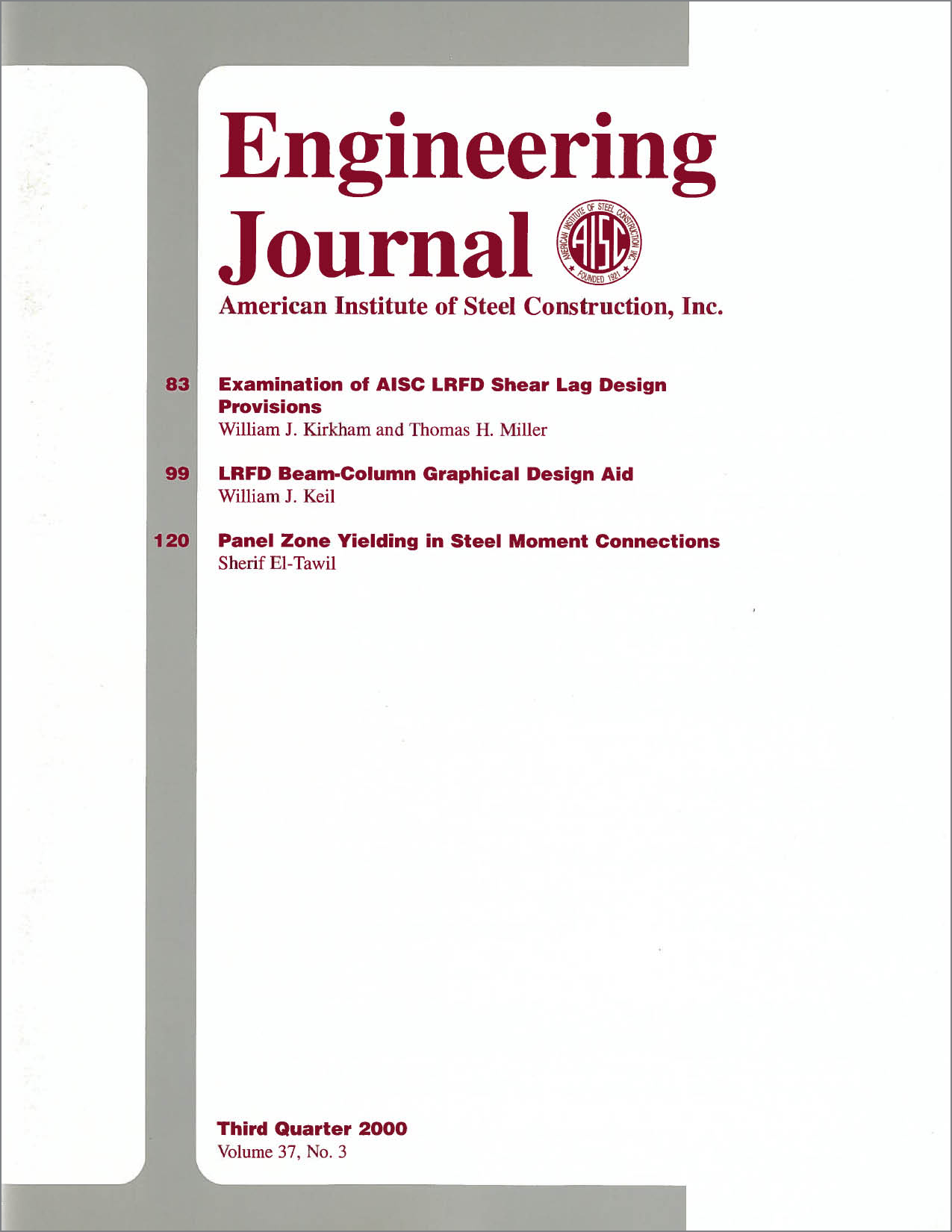Examination of AISC LRFD Shear Lag Design Provisions
DOI:
https://doi.org/10.62913/engj.v37i3.741Abstract
Steel structures are often assembled from standard steel shapes connected by welds or other fasteners. Sometimes, a number of bolts or welds are used to connect all the elements (flanges, web, etc.) of a member to the elements of another member. In most structures, however, not all of the elements of a given cross-section are connected, for numerous reasons. When some elements of a member are not connected, shear lag may result. Typically, in cross-bracing of trusses and frames, an engineer determines the geometry, strength and economical design of the connections between major load-carrying members, joined by one or more gusset plates. When the braces enter the joint at an angle, often little clearance is available to effectively attach the web of the brace. The sizing of this bracing member is determined in part by the efficiency of directly connecting only the flanges to the gusset plates.

